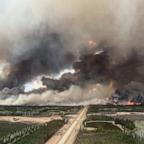Report expected to show slowing job-loss rate
— -- The federal government's April employment report due out today could provide further evidence of an upcoming turnaround in the economy, with the pace of job losses expected to slow. But that doesn't mean the recovery will be quick or painless.
A study released Thursday by the Economic Policy Institute argues the current recession is worse than the early 1980s downturn by virtually every measure. So while many economists predict a recovery later this year, it could be slow, with unemployment near double digits for months.
The good news: A report this week by payroll processor ADP estimates private-sector employment fell 491,000 in April vs. the 708,000 decline it projected for March. IHS Global Insight lowered its estimate for overall job losses in April from 625,000 to 550,000, which would be the smallest drop since October. It estimates the April jobless rate at 8.9%, up from 8.5% in March.
IHS analyst Nigel Gault calls ADP's report "another signal that the period of economic free fall is behind us."
But the Economic Policy Institute (EPI), which is partly funded by labor groups, says the economy faces a more challenging recovery than it did in the 1980s. While the jobless rate is lower today than the 10.8% peak hit in 1982, the descent has been steeper.
Unemployment rose 3.6 percentage points in the first 15 months of the current downturn, vs. 3.2 percentage points during the same period in the earlier slump, the report says. Employment, or the total number of jobs, fell 3.7% in the current slide's first 15 months, vs. 2.9% in the 1980s.
While blue-collar workers suffered in both downturns, today's white-collar set has it tougher. Unemployment for college-educated employees has more than doubled to 4.3% the first 15 months, vs. a 0.5% rise during the Reagan-era slump.
"No matter how you cut it, things are worse than at any time since the Great Depression," says EPI economist Heidi Shierholz.
How to explain the 10.8% unemployment rate in the 1980s? Shierholz says today's workforce includes more educated and older workers who tend to have lower jobless rates. She blames the recession's severity on a credit crisis that could also slow the recovery.




